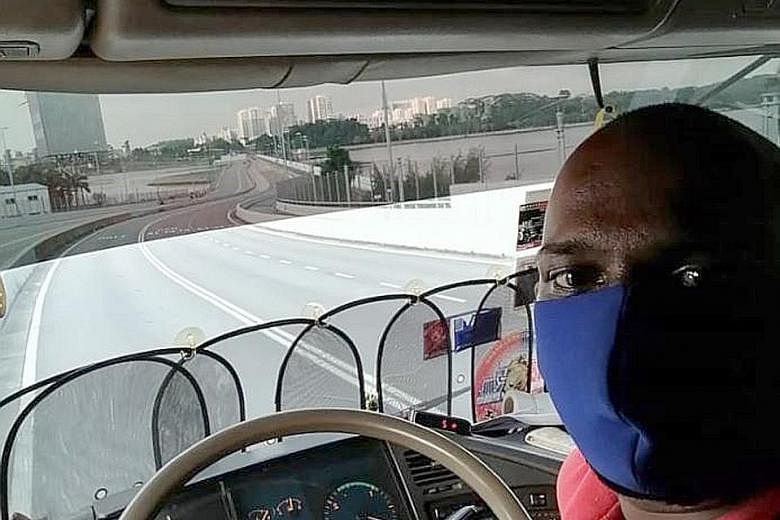These days, Malaysian lorry driver Muhammad Rizwan Muhammad sets off for Singapore at 7am and is able to make it back to his home in Johor Baru in time for lunch.
The bumper-to-bumper traffic at the Woodlands and Tuas checkpoints have disappeared since both nations imposed travel restrictions under Malaysia's movement control order and Singapore's circuit breaker measures.
"This is the first time I've seen the Causeway so empty, there are no more cars or buses," said the 28-year-old Malaysian, whose company transports goods such as steel or electronics into Singapore. He used to make at least two trips across the bridge a day, but in past weeks he makes just one daily.
These days, it is mainly necessities such as meat, fresh vegetables and other food products that are allowed to traverse between both countries, said Johor Trucking Association (JTA) president Novan Hing.
Malaysian trucks and lorries used to make about 7,000 trips daily into Singapore, but this has dwindled to just 2,000, he estimates.
Fewer border trips could also be a result of a fall in demand for certain goods, as seen by Mr Kenny Chan, director of Creative Beverage Ingredients which supplies fresh fruit juice concentrates to coffee shops here. Demand for his products has fallen and he has reduced the number of trips to transport his products from Malaysia from eight to two a month.
It was earlier reported that Singapore imports about 37 per cent of its chicken supply and 15 per cent of its fish from Malaysia, among produce such as eggs, vegetables and milk. Other Malaysian imports include machinery, electronics, chemicals and raw materials for building and renovation works.
Figures from the Department of Statistics show that total merchandise imports from Malaysia to Singapore last month amounted to $3.41 billion and total exports from Singapore to Malaysia stood at $1.18 billion. These figures are significantly lower than the monthly average for the first three months of this year and the amounts totalled in April last year and 2018.
The land border between Singapore and Malaysia is one of the busiest in the world, and is usually a flurry of human and vehicle traffic.
"These two bridges are like our arteries and our bread and butter. When they're unable to function, we are affected quite badly," said JTA's Mr Hing, who is also director of transport firm Soong Ki Trading.
While it is uncertain when activity at the land crossings will resume fully, Singapore's National Development Minister Lawrence Wong said both countries are in talks to ease travel restrictions with the necessary safety measures in place.
Relations between Singapore and Malaysia run deep, said OCBC Bank chief economist Selena Ling, and it would make sense for both countries to coordinate the opening of the border.
Tan Tam Mei
Joyce Lim

